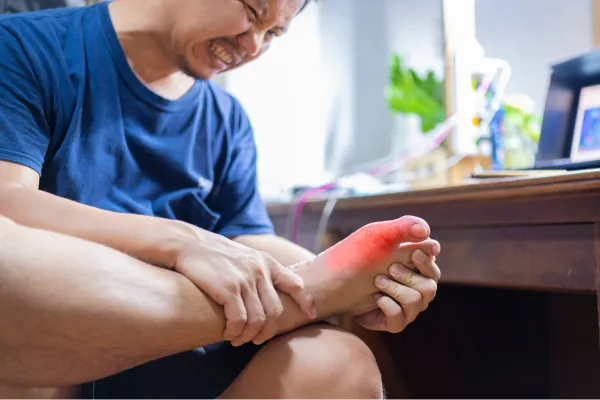
Gout in the Big Toe: Why It Happens and How to Find Relief
Gout in the Big Toe: Why It Happens and How to Find Relief
If you’ve ever woken up in the middle of the night with a throbbing, burning pain in your big toe, you know how intense gout can be. This common form of arthritis often appears suddenly, and it can turn even the light touch of a bedsheet into unbearable pain.
The good news? Once you understand what causes gout and how to treat it, you can take steps to keep flare-ups from ruining your day—or your night.
Why Gout Targets the Big Toe
Gout happens when there’s too much uric acid in the blood. Normally, your body filters uric acid through your kidneys and it leaves through urine. But when levels get too high, sharp uric acid crystals can form in your joints.
The big toe is a common target because:
Lower temperature: The toe is farther from the heart and stays cooler, which makes crystal formation more likely.
Joint shape: The big toe joint has a smaller space, so crystals can quickly cause irritation.
Pressure from walking: Everyday use puts stress on the area, making it more prone to inflammation.
Common Signs and Symptoms
Sudden, severe pain (often at night)
Swelling and redness
Warmth over the joint
Extreme tenderness—even a light touch can hurt
Stiffness after the pain begins to fade
These symptoms usually peak within 24 hours of starting and can last days to weeks.
What Triggers a Gout Attack?
Some common triggers include:
Diet: Red meat, shellfish, sugary drinks, and alcohol (especially beer) can raise uric acid levels.
Dehydration: Not drinking enough water makes it harder for your body to flush out uric acid.
Certain medications: Diuretics and some blood pressure medicines may increase risk.
Health conditions: Kidney problems, obesity, and high blood pressure are linked to gout.
Finding Relief During a Flare-Up
If you’re in the middle of a gout attack, here are steps that can help:
Rest the foot and keep it elevated to reduce swelling.
Apply ice packs for 20 minutes at a time to calm inflammation.
Drink plenty of water to help flush out uric acid.
Take anti-inflammatory medication as recommended by your doctor.
Wear a soft, roomy shoe or open-toed sandal to avoid extra pressure.
Preventing Future Gout Attacks
While you can’t change some risk factors like genetics, you can lower your chances of flare-ups by:
Drinking more water daily
Reducing alcohol and sugary drink intake
Eating more fruits, vegetables, and whole grains
Maintaining a healthy weight
Following your doctor’s treatment plan and medication schedule
When to See a Podiatrist
If you have sudden big toe pain, don’t assume it’s just a minor injury. Gout can damage joints if left untreated. A podiatrist can confirm the diagnosis, guide you on lifestyle changes, and offer treatments to protect your joint health.
Bottom Line:
Gout in the big toe is painful, but with the right care, you can find relief and reduce the chance of future attacks. Early treatment makes a big difference—not just in comfort, but in protecting your foot for the long run.
